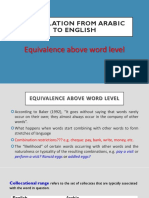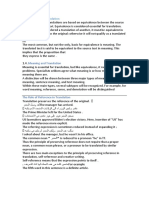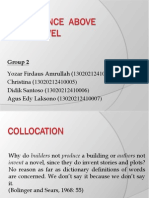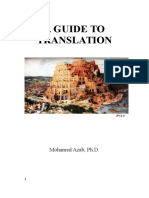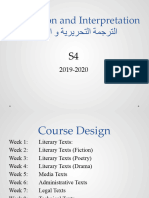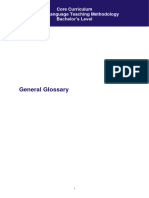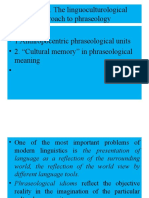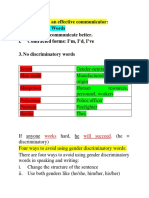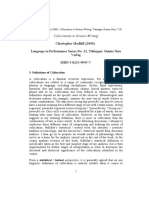0% found this document useful (0 votes)
71 views7 pagesCH 3 Introduction
The document discusses various challenges in translating idioms and fixed expressions from one language to another.
The first problem is that idioms and fixed expressions have rigid patterns that cannot be altered, unlike collocations which allow some flexibility. The second problem is that the meaning of an idiom or expression in the source language may be misunderstood or misinterpreted in translation due to interference from the translator's native language. The third problem is balancing accuracy in translation with creating a natural expression in the target language.
Some strategies for translating idioms discussed include using an equivalent idiom in the target language, translating the meaning via a paraphrase instead of the actual idiom, or omitting idioms if there is no real
Uploaded by
مرام الشهريCopyright
© © All Rights Reserved
We take content rights seriously. If you suspect this is your content, claim it here.
Available Formats
Download as DOCX, PDF, TXT or read online on Scribd
0% found this document useful (0 votes)
71 views7 pagesCH 3 Introduction
The document discusses various challenges in translating idioms and fixed expressions from one language to another.
The first problem is that idioms and fixed expressions have rigid patterns that cannot be altered, unlike collocations which allow some flexibility. The second problem is that the meaning of an idiom or expression in the source language may be misunderstood or misinterpreted in translation due to interference from the translator's native language. The third problem is balancing accuracy in translation with creating a natural expression in the target language.
Some strategies for translating idioms discussed include using an equivalent idiom in the target language, translating the meaning via a paraphrase instead of the actual idiom, or omitting idioms if there is no real
Uploaded by
مرام الشهريCopyright
© © All Rights Reserved
We take content rights seriously. If you suspect this is your content, claim it here.
Available Formats
Download as DOCX, PDF, TXT or read online on Scribd
/ 7
